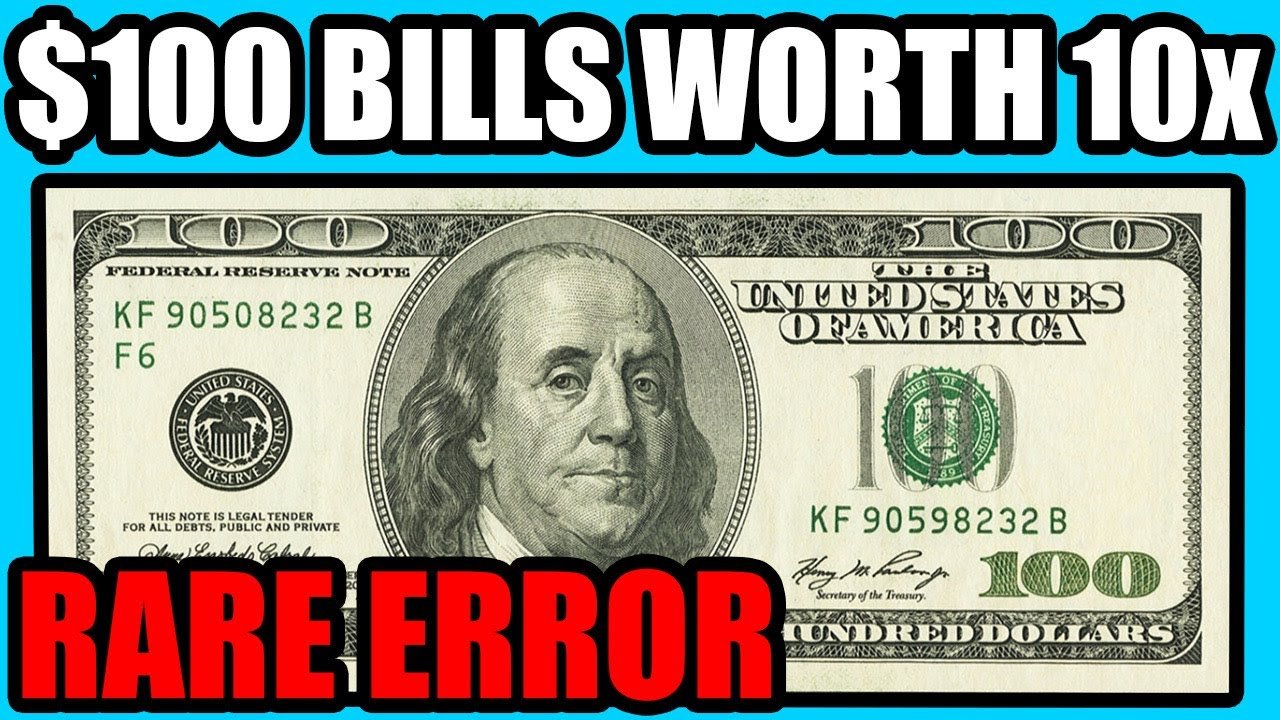In today’s digital-first world, cash often feels like a thing of the past. We swipe, tap, and transfer money through screens, leaving paper bills to gather dust in our wallets. But next time you pull out a $100 bill, take a closer look — it could be worth much more than its face value. In fact, a rare printing mistake could turn that ordinary note into a $75,000 treasure.
While it may sound unbelievable, this isn’t a typo. Certain errors on U.S. currency, known as “error notes,” are highly sought after by collectors and can fetch staggering amounts at auction. And surprisingly, many of these error notes are still circulating, unnoticed, in our daily lives.
The Value of a Mistake: How a $100 Bill Becomes Priceless
U.S. currency is printed with high precision at the Bureau of Engraving and Printing (BEP). However, despite the strict control over the printing process, mistakes still occasionally slip through the cracks. These mistakes, when identified, can significantly increase the value of a bill. Common errors that make a $100 bill worth thousands include:
- Mismatched Serial Numbers: When the serial numbers on each side of the bill don’t match.
- Foldover Print: A portion of the note is accidentally folded during printing, leading to a misaligned design.
- Ink Spots or Stains: Unwanted ink marks that make the note unique.
- Offset Printing: Ink transfer between sheets during printing, leaving a blurry imprint on the wrong side.
- Reversed Stamps or Serial Numbers: A serious misprint where the stamp or serial number is flipped.
For instance, a 2016 $100 note with mismatched serial numbers — one side had an entirely different number — was discovered during a routine bank withdrawal. After authentication, it sold at auction for a jaw-dropping $75,000.
Ordinary People, Extraordinary Finds
What’s truly fascinating about these valuable error notes is that they aren’t typically found by expert collectors or dealers. They are discovered by everyday people who happen to spot something unusual in their wallets. One example comes from a woman in Texas, who received a $100 bill from her bank. Upon closer inspection, she noticed the serial numbers didn’t match, prompting her to take the bill to a coin shop where its true value was revealed.
Similarly, another person discovered a rare note while preparing to pay rent in cash. Realizing the potential, she held onto the bill instead of spending it, later learning its worth.
How to Check Your $100 Bills for Errors
If you think you may have a rare error note in your wallet, it’s easy to start looking for common flaws. Here’s how to inspect your $100 bills:
1. Inspect the Serial Numbers
Each $100 bill has two serial numbers on the front. These should match exactly. If they don’t, you may have an extremely rare mismatched serial number error.
2. Check the Seals and Print Alignment
Look at the Treasury and Federal Reserve seals on the front. They should be in the correct position, with no distortion or inversion. Also, ensure that the print is well-aligned — no crooked or off-center borders.
3. Use Proper Lighting
A good light source can help you spot imperfections like ink smudges, folds, or slight misprints that might otherwise go unnoticed.
4. Compare Online
If something doesn’t seem quite right, search online for other examples of error notes. Numerous forums and websites dedicated to numismatics can offer helpful insights.
What to Do if You Find a Valuable Error Note
If you believe you’ve found a rare note, don’t rush to spend it! Here are the steps you should take:
- Keep It Safe: Avoid spending the note, and protect it from damage.
- Don’t Alter It: Don’t try to clean or press the note — handling it can hurt its value.
- Get It Authenticated: To confirm its authenticity, send it to a grading service like PMG (Paper Money Guarantee) or PCGS Banknote.
- Consider Auctioning It: Contact reputable auction houses like Heritage Auctions or Stack’s Bowers for professional advice and sale.
- Document the Discovery: Take clear, high-quality photos of the note and record details about where and when you found it.
Most of us handle cash without giving it much thought. But next time you find yourself holding a crisp $100 bill, take a moment to look it over carefully. It could be more than just a regular bill — it might be a rare error note worth thousands.
So, before you spend it, take a second glance. You never know; that simple $100 bill could turn into a $75,000 surprise!
FAQs
How do I know if my $100 bill is worth more than face value?
Look for errors like mismatched serial numbers, misprints, or printing shifts. If something doesn’t seem right, it could be worth more.
Can I clean my error note to make it look better?
No, cleaning or altering the note can damage its authenticity and lower its value. Always keep it in its original state.
How can I sell my error note?
You can authenticate it through grading services like PMG or PCGS, and then sell it at reputable auction houses or through specialized dealers.
Are other denominations of U.S. currency worth money for errors too?
Yes, error notes in other denominations, such as $50, $20, and $1 bills, can also be valuable. However, $100 bills are often the most sought after.
What’s the most common error found in $100 bills?
Mismatched serial numbers are one of the most frequently encountered and valuable errors.




